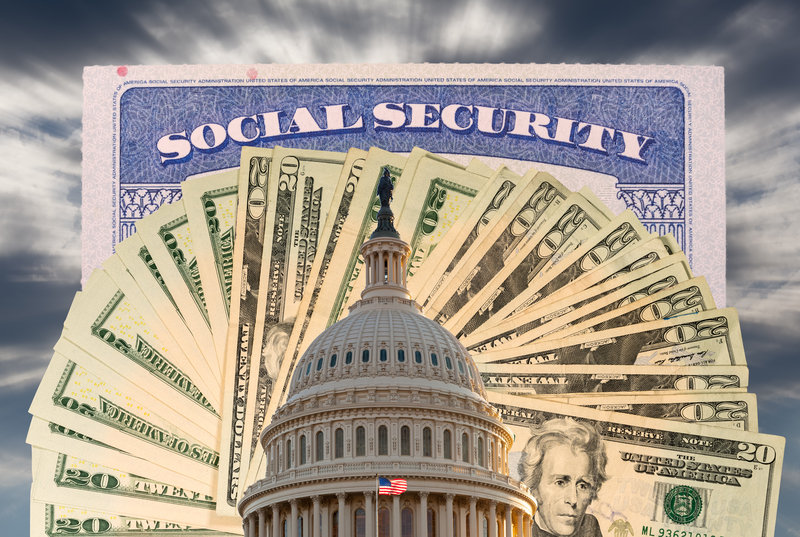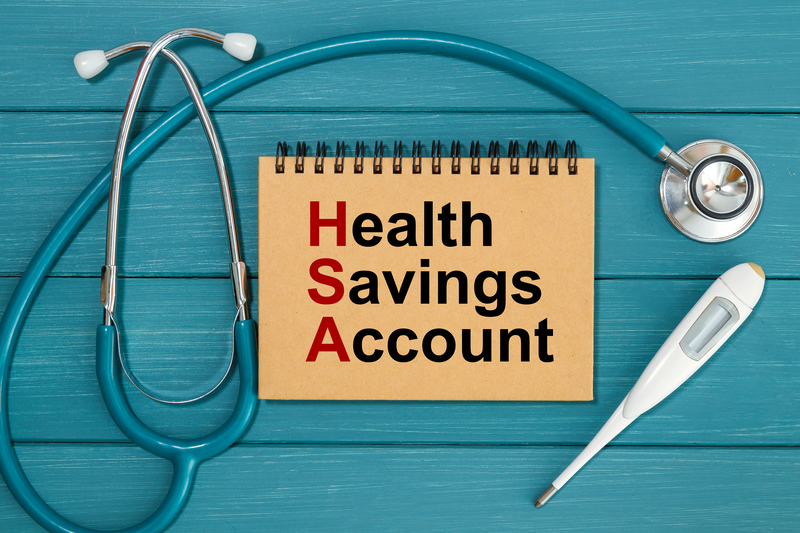Category: Retirement Planning
The Lowdown on the Banking Crisis and What it Means for Retirees
May 15, 2023

In the midst of the Great Retirement, an excess of 2.6 million retirees left the workforce during the pandemic. “A lot of people had reasons to retire and the way markets evolved allowed them to,” says research economist Miguel Faria-E-Castro. While health and safety concerns were very real for many, others chose to leave early because of changing work environments or needing to become full time caregivers; others simply took advantage of rising asset values.
The pandemic isn’t solely to blame for the influx of retirees, though. The Employee Benefit Research Institute regularly finds that many Americans end up retiring earlier than planned. Whether you’ve already retired or intend to soon, it may be important to factor the recent banking crisis into your planning.
Understanding the Banking Crisis
In March 2023, the United States’ Silicon Valley Bank (SVB) suddenly collapsed, mainly in part due to a bank run, when their customers rushed to withdraw their funds over panic due to the bank’s loss of stocks. The failure of this California-based bank raised concerns for Americans about the financial health of their own assets, even though the Federal Reserve, Treasury department, and FDIC moved quickly to ensure that all depositors would have full access to their funds, a move meant to calm fears of a full market collapse. Financial experts believe that because of these unprecedented actions, the failure of SVB does not pose a threat to the financial market at this time.
While deposits of up to $250,000 are FDIC insured, many people are wondering if their 401(k) is protected, and the short answer is: It depends. If your 401(k) is uninsured and invested in “stocks, bonds, or mutual funds, you’re not covered against those investments losing value,” then your funds are not protected under the FDIC guarantee, according to finance professor Valentina Bruno. Retirement plans that the FDIC does cover include IRAs, Roth IRAs, SEP IRAs, and SIMPLE IRAs, up to $250,000, but if you had more than one of these (each valued at over $250,000) at the same banking institution, then only one of them would be insured. This is why it may be a good idea to spread your assets out over different institutions.
Planning for Retirement
If you haven’t retired yet, hopefully you’ve begun planning and saving already, because the earlier you start, the more time your money has to grow. If you’re offered a 401(k) retirement plan through employment, it’s important to take advantage and get enrolled. Even better, if the plan allows you to make contributions, do so and you’ll be rewarded with lower taxes at the end of the year. The biggest mistake people make, according to financial expert Jim Yih, is starting too late. “All my clients, no matter how much they have saved, say they wish they’d started earlier.” Yih’s first recommendation is to put away 10 percent of your gross income, starting as soon as you can.
Become the Expert of Your Retirement
While learning all about retirement plans may be intimidating, many financial advisors actually recommend becoming an expert of your own retirement options. If you are not offered a 401(k) through employment, there are other options, including an IRA, which is a plan that you would open yourself through a broker or other provider. Since there are many types of IRA accounts, the most common being a Traditional or Roth IRA, it’s important to learn about the different conditions of each account before deciding which is the best fit for you. Financial author Liz Weston encourages everyone “to consult a fee-only financial planner or accredited financial counselor if at all possible before retiring, simply because there are so many decisions that have to be made.”
No matter the kind of account you choose, the first step is to determine how much money you’ll need when you retire. Experts advise replacing 70 to 90% of your annual pre-retirement income through Social Security and savings. The next step is to determine what your financial goals are now, such as paying off a mortgage or other debts and saving for your childrens’ college tuition. Factoring in these financial boundaries help put retirement budgets into perspective. Yih warns that, “It’s almost impossible [to do it all] unless you have a big income, and even then, things don’t always work out,” so he tells people to choose two or three focal areas that are most important to them.
Exercising Financial Resilience
In order to increase financial resilience, one must learn to anticipate the unexpected. While 60% of families faced a financial emergency last year, one third faced two. If any of your retirement accounts were affected by the banking crisis, then you may have experienced an unexpected loss firsthand. It’s best to prepare for this and diversify your retirement plan. A good rule is to make sure 80% of your savings are invested in methods that have stood the test of time, while 20% of your funds are involved in higher-risk investments.
Thanks to Social Security, whatever your retirement accounts are, you can still plan on collecting something after the age of 65. This also means that if you were affected by the banking crisis and are 65 or older, then you can still count on these benefits. If you intend to retire earlier than 65, then you want to include this factor in your planning. For instance, how much money will you need to carry health insurance before you’re eligible for Medicaid at 65? Since “Social Security is guaranteed income that is adjusted for inflation,” Weston advises delaying Social Security benefits for as long as you can.
Consider part-time work, not just for the supplementary income it will provide, but for the purpose it will likely bring to your life. The lifestyle component of your retirement is as important as having enough money to retire. “The most successful retirees are not the ones with the most money. The busiest retirees are the most successful ones,” says Yih.
Planning for retirement and financial resilience can provide peace of mind and allow you to focus on what really matters. The resolve you’ll feel after tackling financial planning is priceless. Insureyouknow.org can help you store all of your financial information in one place so that your retirement planning remains organized. Plus, when everything is easy to assess, periodically reassessing your finances when circumstances change becomes painless and straightforward.
5 Retirement Myths Busted
May 2, 2023

Once you retire you assume that you will finally have all the time in the world. You’ll travel the globe, spend your days without a care in the world, and have enough income to support yourself in your retirement. The truth is, all of the above information can be false.
The American College of Financial Services Center for Retirement Income conducted a Retirement Income Literacy Survey to test consumer knowledge about retirement income concepts. Four out of five older Americans failed the survey. The following myths have people getting the wrong idea about how they’re going to live out their golden years.
Myth 1: Your Taxes After Retirement Will be Lower
Many aging individuals assume that their taxes will be lower after they retire because they will have a reduced overall income. However, this isn’t always true. The savings accumulated for retirement may be higher than your earnings during your working years. Additionally, sales and property taxes could also be more as well as the cost of living, further increasing spending.
Myth 2: Social Security Covers Your Expenses
Typically seniors rely on Social Security to cover any expenses they may have in a post-retirement world. Despite this, Social Security is not intended to be an individual’s primary source of income support. “Payroll taxes are expected to cover about 78% of scheduled benefits,” said Cameron Huddleston of Go Banking Rates. “If the funding gap isn’t filled, retirees could get lower Social Security payments.”
Myth 3: Health Issues Don’t Affect You Until Later in Life
There are many seniors who believe that they can work as long as they need to past the age of 65. However, most aren’t able to work as long as they need to or want to in order to accumulate sufficient savings. Some are forced into retirement because of medical problems that may affect their ability to work including arthritis, limited mobility, and hearing issues.
Myth 4: Medicare Will Cover Health Care Costs
Medicare is a federal health insurance program designed for U.S. adults who are 65 years of age or older intended to help meet health costs. Some older Americans assume that Medicare will be able to cover all health costs well into retirement. However, this program doesn’t cover several deductibles, copayments, and the cost of care for dental, vision, and hearing conditions. “Medicare does not cover the cost of long-term care, including extended stays at nursing homes and assisted living facilities,” Rachel Christian of RetireGuide added.
Myth 5: Retirement Planning Can Wait
One of the biggest mistakes to make is waiting to create a retirement plan at a later age. It is most efficient to start investing money in retirement at an early age so compound interest can increase your retirement accounts throughout your time in the workforce. Saving money in your 20s and contributing 15%-20% of your paycheck is key for ideal retirement savings. However, every decade an individual delays in saving requires them to save a greater percentage of their paycheck.
InsureYouKnow.org
It is important to know all the facts about retirement when starting to plan for your future. You need to take into account what is contributing to your retirement savings and what steps you need to take to ensure a comfortable living. With insureyouknow.org by your side, you can create an efficient retirement plan without misconceptions of retirement myths that may affect the process.
The 8 Best Places to Live & Retire
April 15, 2023

Imagine this: you’re sitting on a hammock at the beach with the sun on your face without any concern about getting back to work. You’ve entered your retirement, better known as the best phase of your life.
There are many high liveability indicators that help characterize the best place for retirement. Many of these factors include a prosperous economy to find work in case a retiree needs to reenter the workforce, mild weather, a relatively low crime rate, quality hospitals and assisted living facilities, and sufficient wellness opportunities that won’t have you missing the workforce.
There are several places around the United States that serve as ideal spots to retire that possess many of these factors when you say goodbye to the 9 to 5.
Top Places to Escape to for Retirement
According to U.S. News, the following locations have the most affordable housing options, low retiree taxes, and are ranked high for overall happiness and quality of health care.
- Lancaster, Pennsylvania
- Harrisburg, Pennsylvania
- Pensacola, Florida
- Tampa, Florida
- York, Pennsylvania
- Naples, Florida
- Daytona Beach, Florida
- Ann Arbor, Michigan
Lancaster, Pennsylvania
Lancaster is located near Philadelphia, Pennsylvania. In this city, there is plenty of Amish produce, local stores at the Lancaster Central Market, and a wide variety of cuisines and restaurants. It offers advanced health care for seniors and has high rates of happiness for its residents. Many of the residents also enjoy the diverse collection of cuisines and the art galleries and museums in the area including The Pennsylvania College of Art & Design and Franklin & Marshall College.
Harrisburg, Pennsylvania
Harrisburg is the state capital of Pennsylvania with the Susquehanna River and several hiking trails including the Appalachian Trail. This ideal location has large metro areas nearby for visiting and the housing costs are very affordable for the residents. Many retirees enjoy traveling to New York City, Washington, Philadelphia, and Baltimore for day trips along the coast.
Pensacola, Florida
Pensacola is located near the border of Florida and serves as an accessible beach retirement spot for retirees. It features low taxes, high desirability, and affordable housing. It also has a very convenient location for access to the Gulf of Mexico and Pensacola Bay and a warm desirable climate. This area also has a small military presence that encourages several military families to settle in the area.
Tampa, Florida
Tampa is a city with a combination of a beach and a metro for residents. Highlights of the city include many entertainment options including zoos, theme parks, and aquariums. Tampa also serves as a popular port spot for cruise ships for retirees to travel post-retirement. There are several active senior communities and neighborhoods in the area including Bayshore Beautiful, Bayshore Gardens, Beach Park, Oakford Park, and Sunset Park.
York, Pennsylvania
York is a city in Pennsylvania with preserved architecture from the 1700s that previously served as the nation’s capital. With a population of just under 500,000, it played an important role during the Revolutionary War and has a rich history for its residents. Retirees can enjoy a wide variety of places to explore in this city including galleries and theaters like the Agricultural and Industrial Museum and Colonial Complex, vendors at York’s Central Market, and parks and trails including Heritage Rail Trail County.
Naples, Florida
Naples is more expensive than other retirement spots in Florida but it allows for a high quality of life. Without an income tax for the state, retirees are able to keep more of their earnings if they obtain another job. Over half the existing population in the city is already over the age of 65. These residents are able to enjoy the warm weather, sunsets and beaches at the Naples Pier, several restaurants and shops, and private golf courses including the Hibiscus Golf Club and Naples Grande Golf Club.
Daytona Beach, Florida
Daytona Beach on the east coast of Florida has mild winter weather and is known for its prevalence of motor sports. Many retirees enjoy the low housing costs and views of the Atlantic Ocean. This area also has several 55-and-older communities already in place including Latitude Margaritaville which sells several single-family homes with resort-style amenities.
Ann Arbor, Michigan
Ann Arbor, a college town with the University of Michigan, has a vibrant economy and lifestyle with abundant health care options and job opportunities. Retirees enjoy a high quality of life with ample musical performances and sports events. Additionally, this area has one of the largest healthcare complexes in the world with high-quality treatment facilities through Michigan Medicine, which is especially appealing to retirees.
InsureYouKnow.org
After leaving the workforce, it is important to find the best place for retirement. At the places mentioned in this post, many retirees enjoy the widespread opportunities and high liveability indicators. At insureyouknow.org, you can track your savings to see which retirement location is the best fit for you and your future.
Retiring Early: A Long Vacation or a Trap?
February 14, 2023

They say retirement is the start of your new life. No more 9 to 5 workdays, late nights, and missed holidays––retirement is just one never-ending vacation that you get to enjoy. However, there are certain obstacles a person may face if they decide to go down the road of early retirement.
The Covid-19 pandemic pushed many Americans to retire early as much of the job market closed down, causing individuals to lose their jobs. According to Bloomberg, more than 3 million Americans retired early because of the pandemic. This amount equals more than half the workers that are still missing from the labor force from before the pandemic.
This public-health crisis has caused many Americans to re-evaluate their life priorities, pushing them toward the solution of retirement. The Economist explains that 49.9% of Americans now expect to retire before the age of 62.
Many of these people are deciding to retire before accumulating the earnings they would need to live a comfortable life. “Almost two-thirds of people — between ages 57 and 66 — choose to retire early out of their own volition, despite having saved next to nothing,” said Laurence Kotlikoff, a contributor for CNBC. “And most of them are able-bodied, without disabilities that would prevent them from staying on the job.”
This growing trend towards early retirement has pros and several cons that will continue to affect these individuals throughout their lives.
What are the Pros?
After retiring, many people are given more freedom to explore new opportunities. These benefits can have a lasting effect on the body and mind of a person. They include the following:
An Increase in Health and Well-Being
Without a job to do every day, you are granted more time to improve your health through exercise, eating healthier foods, and taking time to work on your mental health without the constant stress of work. You can get more sleep and focus on improving the quality of your life while adopting healthier habits.
New Career Potential
Moving away from a high-stress job can allow you more part-time opportunities. Some people embark on new career ventures, try out a new job field, or work on a passion project, all on their own schedule.
More Time to Travel and Pursue New Passions
Without set timings, you can take spontaneous trips and visit new places. Many people take this additional time to enjoy new hobbies, volunteer in the community, and spend more time with their family and friends.
What are the Cons?
Despite the pros mentioned above, the current economy has caused several hurdles for those that decide to retire at a younger age. They include the following:
Smaller Social Security Benefits
If you decide to take Social Security earlier, you will have fewer benefits than you would at a later age. “If you were born in 1960 or later, for example, and you start taking benefits at age 62, the earliest age at which you’re eligible, your monthly benefits will be 30% less than if you wait until age 67,” said Greg Daugherty, a writer for Investopedia. This means losing potential benefits on a monthly basis.
Health Insurance
You become eligible for receiving Medicare at the age of 65, but until then, you have to find your own source of health insurance. With high premiums, this can be a difficult task compared to the benefits you received with your workplace plan.
Lack of Income
Leaving the job at an earlier age means spending more years without a constant source of income. If plans change or you run out of savings, then it won’t be as easy to enter back into the job market after being out of it for so long. Furthermore, the U.S. News states that potential tax penalties can occur if a person takes money out of their retirement account before 59 ½ years old.
Housing Expenses
Mortgage expenses, home maintenance costs, and property taxes pile up after retiring early. In fact, “44% percent of retired homeowners between ages 60 and 70 still carry a mortgage,” said John Waggoner from the AARP while crediting an American Financing survey. These extra charges can take up a huge chunk of your savings.
InsureYouKnow.org
It is important to weigh all the pros and cons of early retirement before you make a decision. It is essential to come up with a plan that allows you to retire at a time that is right for you while having enough savings to ensure you live a satisfied life. At insureyouknow.org, you can track your accumulated savings and create the most ideal retirement plan.
Look Forward to Increases in Your 401(k) Limits
October 31, 2022

The amount you can contribute to your 401(k) plan in 2023 has increased to $22,500, up from $20,500 for 2022. The Internal Revenue Service (IRS) announced this change and issued technical guidance regarding all of the cost‑of‑living adjustments affecting dollar limitations for pension plans and other retirement-related items for the tax year 2023 in Notice 2022-55 posted on IRS.gov.
Highlights of changes for 2023
This contribution limit applies to employees who participate in 401(k), 403(b), most 457 plans, and the federal government’s Thrift Savings Plan.
The limit on annual contributions to an IRA increased to $6,500, up from $6,000. The IRA catch-up contribution limit for individuals aged 50 and over is not subject to an annual cost‑of‑living adjustment and remains $1,000.
The catch-up contribution limit for employees aged 50 and over who participate in 401(k), 403(b), most 457 plans, and the federal government’s Thrift Savings Plan has increased to $7,500, up from $6,500. Participants in 401(k), 403(b), most 457 plans, and the federal government’s Thrift Savings Plan who are 50 and older can contribute up to $30,000, starting in 2023.
The catch-up contribution limit for employees aged 50 and over who participate in SIMPLE (Savings Incentive Match PLan for Employees) plans has increased to $3,500, up from $3,000. (This plan allows employees and employers to contribute to traditional IRAs set up for employees. It is ideally suited as a start-up retirement savings plan for small employers not currently sponsoring a retirement plan.)
The income ranges for determining eligibility to make deductible contributions to traditional Individual Retirement Arrangements (IRAs), to contribute to Roth IRAs, and to claim the Saver’s Credit all increased for 2023.
Taxpayers can deduct contributions to a traditional IRA if they meet certain conditions. If during the year either the taxpayer or the taxpayer’s spouse was covered by a retirement plan at work, the deduction may be reduced, or phased out, until it is eliminated, depending on filing status and income. (If neither the taxpayer nor the spouse is covered by a retirement plan at work, the phase-outs of the deduction do not apply.)
Phase-out ranges
In a traditional IRA deduction phase-out, taxpayers can deduct contributions if they meet certain conditions. If during the year either they or their spouse was covered by a retirement plan at work, the deduction may be phased out until it is eliminated, depending on filing status, and adjusted gross income (AGI):
- For single people covered by a workplace retirement plan, the IRA phase-out range is $73,000 to $83,000, up from $68,000 to $78,000.
- For married couples filing jointly, where the spouse making the IRA contribution is covered by a workplace retirement plan, the phase-out range is $116,000 to $136,000, up from $109,000 to $129,000.
- For an IRA contributor who is not covered by a workplace retirement plan and is married to someone who is covered, the deduction is phased out if the couple’s income is between $218,000 and $228,000, up from $204,000 and $214,000.
- For married individuals filing a separate return who are covered by a workplace retirement plan, if they lived with their spouse at any time during the year, the phase-out range is not subject to an annual cost-of-living adjustment and remains $0 to $10,000.
For a Roth IRA income phase-out, AGI ranges for taxpayers include the following provisions:
- The income phase-out range for singles and heads of household is $138,000 to $153,000, up from $129,000 to $144,000.
- The income phase-out range for married couples filing jointly is $218,000 to $228,000, up from $204,000 to $214,000.
- For married individuals filing a separate return, if they lived with their spouse at any time during the year, the phase-out range is not subject to an annual cost-of-living adjustment and remains $0 to $10,000.
The 2023 income limit for the Saver’s Credit (also known as the Retirement Savings Contributions Credit) for low- and moderate-income workers has increased to:
- $73,000 for married couples filing jointly, up from $68,000.
- $54,750 for heads of household, up from $51,000.
- $36,500 for singles and married individuals filing separately, up from $34,000.
- For a married individual filing a separate return who is covered by a workplace retirement plan, the phase-out range is not subject to an annual cost-of-living adjustment and remains between $0 and $10,000.
The amount individuals can contribute to their SIMPLE retirement accounts has increased to $15,500, up from $14,000.
InsureYouKnow.org
After you review the IRS retirement plan changes for 2023, keep a record at insureyouknow.org of your retirement accounts so you’ll be able to take advantage of the new limits for your contributions and deductions.
Ask or Be Asked: Executor of an Estate
March 2, 2022

An executor of an estate is someone called upon to settle a deceased individual’s financial affairs. In your will, you may name a close relative, friend, accountant, attorney, or financial institution to act as executor of your estate. You also may designate co-executors—more than one person to handle your affairs. If you are asked to be an executor, consider it a great honor. But at the same time, keep in mind that it is also a great responsibility.
You should select an executor with integrity and good judgment. The law requires an executor to act in the estate’s best interest—known as “fiduciary duty”—even if they are also an heir, which is often the case. You’ll need to make sure they understand and are prepared for the job.
The Duties of an Executor of an Estate
An executor’s responsibilities can vary depending on the complexity of your estate, and the decisions you designate in your will. Following are some of the duties an executor of an estate performs.
- Locate the last will and file it in probate court
- Obtain certified copies of the death certificate
- Notify the state department of health of the death if a funeral home, crematorium, hospital, or nursing facility has not
- Distribute assets to beneficiaries
- Pay creditors
- Issue notices of death to banks, government agencies, and insurance companies
- File final tax returns
- Maintain property until the estate is settled
- Arrange care for any pets
- Make court appearances on behalf of the estate
- Notify current employer, if applicable
- Notify the deceased’s beneficiaries of the probate hearing
- Keep accurate records
- File the final accounting with the court and close the estate
As an executor, you may discover you need to hire a professional such as an accountant or attorney to help value and distribute certain assets, including:
- Assets with disputed ownership
- Business interests
- Royalties
- Out-of-state assets
- Complex investments
Ambiguities in a will and substantial bequests to a minor also may require a professional’s expertise, which your estate will pay customarily.
The Decision to Serve as an Executor
If you are asked to serve as an estate’s executor, realize that it is a great honor and a great responsibility. Consider your decision carefully before you agree. Think about the time commitment as well as the skillset and temperament required to perform the duties. Find out why the person asked you to serve as an executor and discuss his expectations for you to fill this role.
With this disclosure, you should be able to decide if you are qualified for the job and your fulfillment of an executor’s duties will be appreciated.
Compensation Considerations
Many executors perform their duties without compensation, especially if they are one of your estate’s beneficiaries. But executors can get paid for their work, and this arrangement is more common if the executor is a person outside your family or if settling your estate requires significant expenses such as travel, filing court documents, or overseeing the sale of your real estate.
Another option for you is to limit in your will the fees to a specific dollar amount. Or you may specify the payment of reasonable fees based upon state law.
Typically, executors can expect to get paid once the estate is settled. If they incur out-of-pocket expenses, such as utilities, property taxes, insurance, and storage fees before the estate is settled, they can usually reimburse themselves during their estate administration. But again, compensation is a subject that should be spelled out before you accept an executorship. Spending down any estate monies can be an area of great sensitivity, especially if heirs believe their inheritance was reduced because of your executorship.
InsureYouKnow.org
When you select an executor of your estate who accepts the responsibility to carry out your wishes regarding your estate upon your death, ask yourself the following five essential questions. Let the executor know if the answers can be found on your InsureYouKnow.org portal.
- Where is your original will? If you keep your will in your house, be specific about where to find it. If you filed it with your attorney, provide contact information. Don’t store it in a safe deposit box, where it may be difficult to access after your death. You should share your InsureYourKnow.org access credentials with the executor of your estate to be able to find a copy of your will online.
- Who should be notified? Compose a list of people and organizations with contact information for your executor to contact. If you keep this list at InsureYouKnow.org, you can update it regularly.
- What are your passwords and access codes? Let your executor know how to retrieve your passwords and access codes for email, social media, other media accounts, cellphones, and computers. Store and keep this data current at InsureYouKnow.org.
- Who will receive your possessions? If you have nonfinancial items such as family recipes, photos, heirlooms, and memorabilia, keep details with designated recipients at InsureYouKnow.org.
- Do you have any secret items? Let the executor or another person you trust know if you possess personal items that need to be dealt with on a confidential basis. Such items may include correspondence, photos, or documents personal in nature. You can keep a secure list of these items at InsureYouKnow.org.
Selecting a trusted executor to carry out your will is an important part of estate planning. Experts recommend updating your will every few years to make sure it still reflects your chosen executor and decisions to be carried out after your death. If you need to create or update your will, you can file copies at InsureYouKnow.org.
Whether you are the person asking or are the person being asked to be an executor of an estate, carefully consider and execute the responsibilities and duties required.
The Great Resignation Continues in 2022
January 29, 2022

“The Great Resignation” is a term coined in May 2021 by Anthony Klotz, Ph.D., an associate professor of management at Mays Business School at Texas A&M University who predicted the mass exodus of employees abandoning jobs during the pandemic.
In April, a month before Dr. Klotz made this prediction, a record 4 million people quit their jobs, many of them in low-paying, inflexible industries such as retail trade sectors and food services. He explained that during the pandemic, employees have been able to reflect about family time, remote work, commuting, passion projects, life and death, and what it all means which led workers to consider alternatives to their current positions.
Because the latest data suggests this trend, also called the “Big Quit,” will continue through 2022, employees, as well as employers, must prepare for changes in the workforce.
Employees
Before you submit your resignation, consider the following suggestions to guide your decision:
- Reassess your duties: Expanding your responsibilities within the company may offer the growth that you’re looking for without leaving your workplace. Promotion within your company may lead to a higher salary and additional benefits. On the other hand, you may feel overworked or are experiencing burnout, resulting in work-related stress, and seeking a less demanding opportunity may be a solution during this difficult time.
- Meet with your employer: If you prefer to work remotely, meet with your employer and plead your case to work all or part of your workweek away from the corporate office, especially if you have health and safety concerns, childcare issues, or COVID-related care responsibilities. Explain how important work/life flexibility is to you and ask if your employer is willing to consider your needs for your home life situation. Take this opportunity to ask if your salary, benefits, and health insurance could be improved to entice you to stay.
- Be flexible with your transition: If possible, notify your supervisor in person when you decide to resign and be flexible about the ending date in your position. Be professional in your exit interview, request a letter of recommendation for your files, find out when you’ll receive your last paycheck, and ask about the continuation of your benefits.
- Assess your financial situation: If you determine that you need to continue receiving a steady paycheck and insurance benefits, secure another position or outline a solid self-employment opportunity before you resign. If you are close to retirement age, figure out if you can delay collecting Social Security and retirement benefits so you can collect higher monthly payments in the future.
Employers
Employers who want to reduce staff turnover and retain experienced employers may benefit from the following tips adapted from the article, “How Employers Can Overcome The Great Resignation” from the Worth Media website.
- Be creative in putting together benefits packages that can support a diverse workforce with broad, varying needs.
- Remain flexible when employees choose their work locations.
- Keep an open line of communication with your employees.
- Emphasize the importance of employees’ mental and physical well-being.
- Prioritize pay equity and adopt a spirit of transparency.
- Remind your employees about your company’s mission, values, and vision.
- Treat employees who do leave with respect, a sense of professionalism, and kindness.
Employers’ main goal during this tumultuous time should be to remain calm, listen to employee feedback, and use it to make any necessary changes to their business model, benefits package, and salaries.
InsureYouKnow.org
Are you planning to join “The Great Resignation” in 2022? If so, consider not only how you can improve your present work situation but also what the future may hold for your career choices, continuing education, home life, insurance coverage, and financial goals. As you put each of these options in place, keep records regarding your decisions at insureyouknow.org.
Retirees Face the Rising Cost of Living
August 14, 2021

Have you noticed this year that your grocery bill has been rising and the price of gas is higher each time you fill up at the pump? You also may have been shocked by sticker prices on new and used cars and trucks resulting from inflation in recent months.
Consumer Price Index
On July 11, 2021, the Labor Department reported its consumer price index (CPI) rose 5.4 percent in July from a year earlier, in line with June’s figure and matching the largest jump since August 2008. White House officials are cautiously optimistic that the current increase in prices will be transitory, citing a continued drop in forward prices for lumber and other goods that experienced sharp increases because of supply chain bottlenecks. Steel capacity also had risen substantially over the past few months, they said.
The Federal Reserve has been keeping a close eye on inflation reports since it’s the central bank’s job to maximize employment and keep prices stable. Chairman Jerome Powell and other officials acknowledge the recent acceleration in prices but believe that the inflation is “transitory” and that prices won’t continue to increase at their current pace for too long.
As one of the most-cited inflation gauges, the CPI measures changes in how much American consumers pay for everyday goods and services including groceries, gasoline, clothes, restaurant meals, haircuts, concerts, and automobiles.
The CPI and other price measures have been on the rise in 2021 in large part because of a comeback in consumer spending and U.S. gross domestic product (GDP) as COVID restrictions eased.
Economic activity as measured by GDP rose at an annualized rate of 6.5 percent in the second quarter as Americans frequented restaurants, took summer vacations, and resumed other activities that COVID-19 had hindered.
Consumer Spending
Consumer spending, bolstered by the nationwide rollout of vaccines, jumped 11.8 percent during the three months ending June 30, the second-fastest rate since 1952.
At the same time, the pent-up demand for travel, retail, and restaurants has left many businesses scrambling to keep up and led to several setbacks on the supply side of the U.S. economy.
Employers who have struggled to find workers have hiked pay or offered signing bonuses to help fill the record 10.1 million job openings across the economy at the end of June. The leisure and hospitality sector, which includes restaurants, bars, and hotels, has one of the highest levels of job openings at more than 1.6 million.
But instead of absorbing higher labor and material costs, some businesses have begun to pass on the impact of higher wages to their consumers.
Inflation and Retirees
Higher prices take a significant toll on retirees. Social Security benefits rise only once a year. “Those with modest Social Security benefits are the ones who really have trouble,” reports Mary Johnson, Social Security and Medicare policy analyst at The Senior Citizens League, a non-partisan advocacy group. “Other retirees have had to tap more of their savings than they had planned because the Social Security benefit didn’t keep up with 2021’s hot inflation,” she says.
Inflation could prompt largest Social Security cost-of-living adjustment in decades. Retirees could see a 6.1 percent bump to their Social Security benefits in 2022. That would be the biggest increase since 1983, according to The Senior Citizens League, which calculated the figure.
The Social Security Administration typically announces the amount of the annual cost of living adjustment (COLA), if any, in October. The increase in benefits typically goes into effect in January.
You might not see all the increase in your benefit payment. If your Medicare Part B premiums are deducted from your Social Security (as is the case with 70 percent of Part B enrollees), a Medicare rate increase could offset all or part of the COLA.
The Social Security COLA for 2021 was 1.3 percent. For many retirees, that meant just $20 more per month. Over the years, the increases have led to a loss of buying power for seniors, according to research from The Senior Citizens League.
The amount your Social Security check will increase will be based on a combination of your underlying benefit and the Social Security COLA. Assuming the Social Security COLA is at the 6.1 percent level for 2022, and you are receiving the maximum Social Security benefit of $3,895, you would get an additional $237.60 per month. This would mean an increase of $2,851.14 per year.
The jump in benefits will be a bit more modest for those receiving the average Social Security benefit in 2021. Social Security benefits averaged just $1,543 per month in 2021. Again, assuming a 6.1 percent Social Security COLA, you could see your retirement benefits increase by $94.12 per month. When living on a fixed income, an additional $1,129.48 can go a long way.
If you are still working, make sure you have other retirement income to help maintain your standard of living. Even at the maximum Social Security benefit, you will have a tough time keeping your standard of living on Social Security alone. Work with a trusted financial planner to help determine the optimal time to claim your Social Security benefits and to set up a monthly payment schedule.
Currently, 69 million Americans are collecting Social Security benefits. So, a significant increase in the COLA to Social Security will be significant for the budgets of many retirees. Before the announcement is made in October, the Today show offers hints to help you save money at the grocery store, including keeping track of your grocery spending, taking inventory of what you already have and using it, and meal planning to reduce food waste and save on your food bill.
Smart shoppers will also watch for sales, comparison shop, and consider buying useful, non-perishable items in bulk and even making use of an extra freezer whenever possible. When it comes to saving money, cheap and healthy can go hand in hand.
InsureYouKnow.org
If you currently collect Social Security benefits or plan to in 2022, you can track at insureyouknow.org your monthly spending patterns, file copies of your Social Security and Medicare statements, as well as savings accounts you may have set up for vacations, rainy days, or emergency contingency plans.
The Call to Return to the Office
June 28, 2021

Has your employer notified you that the time has come for you to return to your office? Are you ready, hesitant, or determined to seek an alternative option to keep you at home, or at least closer to home if you also would face the return of a long daily commute?
Employees’ Reactions
With the coronavirus pandemic receding for everyone who has received the vaccine, some employers are pushing employees to get back to work in office buildings. But some people have moved during the pandemic; others have concerns about the virus and vaccine-hesitant colleagues; and working parents would have to quickly find childcare options for youngsters out of school for the summer.
According to Bloomberg News, a May survey by Morning Consult of 1,000 U.S. adults showed that 39 percent would consider quitting if their employers aren’t flexible about remote work. Some workers are leaving for new jobs, with better pay or remote-friendly working conditions. Others have decided to start their own businesses rather than collect a steady paycheck. Still others are quitting with no firm plans, confident they can get a better deal elsewhere as the economy rebounds from the pandemic recession. Some people are seeking happiness and are rethinking what work means to them, how they are valued, and how they spend and balance their time at work and home.
Increase in Resignations
All these factors are prompting a dramatic increase in resignations—a record 4 million people quit their jobs in April alone, according to the U.S. Bureau of Labor Statistics. More than 740,000 people who quit in April worked in the leisure and hospitality industry, which includes jobs in hotels, bars and restaurants, theme parks, and other entertainment venues. Many workers in these fields are burnt out after enduring conditions during the pandemic that may have put their personal health at risk.
At the same time, white-collar workers are feeling empowered too; resignations also are up in professional services. In March, about a quarter of all workers told Morning Consult they were considering switching employers.
Employers’ Reactions
Faced with mass resignations, employers are scrambling to keep their talented workforce on board. Some employers have announced plans to raise pay, be flexible, and make employees’ well-being and safety top priorities when they return to their companies’ offices. A compromise of allowing employees to choose to work remotely part of their workweek is being considered by concerned employers. With work teams composed of both in-office and remote employees, businesses will need to offer collaboration tools and innovative techniques so employees can continue to work together effectively, regardless of location. No one solution will work for every company, but a reintroduction to office life without a well-thought-out plan can be risky and dangerous.
Post-COVID-19 Working Conditions
Although some companies have decided to remain fully remote and have gone as far as selling their office buildings or not renewing lease agreements, other businesses want their entire staff to return to the office. Most organizations will be somewhere between a fully remote and a fully in-place workforce. Global Workplace Analytics, a research firm that specializes in remote work trends, predicts that 25–30 percent of U.S. employees will work from home multiple days per week by the end of 2021, up from 3.6 percent prior to the COVID-19 pandemic.
Hybrid Work Model
A hybrid work model is made up of both remote and in-office workers and gives employees the ability to choose how, where, and when they perform their job duties. This often includes office spaces designed with flexible work arrangements where employees come and go from the office based on preference and as project work dictates.
Several large enterprise companies have formally announced new policies designed to embrace a hybrid work model that gives employees the option to voluntarily return to the office or continue to work remotely for an indefinite period.
Returning to work after the COVID-19 pandemic will look different for every organization and will require a solution that works best for the safety and welfare of a specific group of employees.
Lifesize.com offers 10 Tips for Companies Returning to Work after COVID-19 under the following bullet points.
· Embrace a hybrid work model
· Implement a rotational work schedule
· Take a phased approach
· Restructure your offices
· Create a sanitary workplace
· Encourage good hygiene and self-isolation
· Have a contingency plan
· Get employee feedback
· Review your communication tools
· Maintain team-building efforts
Following the COVID-19 pandemic, employees and employers will face monumental work-related decisions that will affect the future of a productive workforce returning to physical offices, choosing a hybrid model of in-place and remote work, or abandoning the traditional workplace to seek alternative career options not bound to pre-pandemic conditions.
InsureYouKnow.org
If you are armed with a new contract from your employer that lists enhanced perks, including health and dental insurance benefits, an amended retirement package, remote work options, or a guaranteed raise, keep these records on file at InsureYouKnow.org. Also keep online your up-to-date resume if you are actively looking for a new work arrangement that meets your definition of a satisfying career choice.
Save with a Health Savings Account
April 27, 2021

A Health Savings Account (HSA) is a type of savings account that lets you set aside money on a pre-tax basis to pay for qualified medical expenses. By using untaxed dollars in an HSA to pay for deductibles, copayments, coinsurance, and some other expenses, you may be able to lower your overall health care costs.
An HSA may receive contributions from an eligible individual or any other person, including an employer or a family member, on behalf of an eligible individual. Contributions, other than employer contributions, are deductible on the eligible individual’s tax return whether or not the individual itemizes deductions. Employer contributions aren’t included in taxable income and distributions from an HSA that are used to pay qualified medical expenses aren’t taxed.
High Deductible Health Plan
One way to manage your health care expenses is by enrolling in a High Deductible Health Plan (HDHP) in combination with opening an HSA. While you can use the funds in an HSA at any time to pay for qualified medical expenses, you may contribute to an HSA only if you have an HDHP—generally a health plan that only covers preventive services before the deductible. For plan year 2021, the minimum deductible is $1,400 for an individual and $2,800 for a family. (The term “minimum deductible” refers to the amount you pay for health care items and services before your plan starts to pay.) Maximum out-of-pocket costs (the most you’d have to pay if you need more health care items and services) are $7,000 for an individual and $14,000 for a family.
Contribution Limits in 2021
For calendar year 2021, the annual limitation on deductions for an individual with self-only coverage under an HDHP is $3,600. The annual limitation on deductions for an individual with family coverage under an HDHP is $7,200. The IRS announces annually the HSA contribution limit that applies each calendar year. You can review IRS Publication 969 each year to determine the current limit.
HSA funds roll over year to year if you don’t spend them. An HSA may earn interest or other earnings, which are not taxable.
Some health insurance companies offer HSAs for their HDHPs. Check with your company to see if you are eligible. You also can open an HSA through some banks and other financial institutions. If you are interested in enrolling for healthcare coverage through the U.S. Department of Health and Human Services’ Health Insurance Marketplace®, you can check to see if specific plans are “HSA-eligible.”
It’s also important to note that there is an aggregate limit that applies to both your own contributions as well as any money your employer puts into your account. This is different from 401(k) rules, where an employer’s matching funds do not affect your ability to contribute to your account. If your employer puts $2,000 into your HSA and you have self-only coverage, you would be allowed to contribute only $1,600 before reaching the 2021 contribution limit.
Catch-up Contributions
HSA account holders who are 55 and older are entitled to make an additional catch-up contribution valued at $1,000 on top of contribution caps. Because of the HSA catch-up contribution rules, in 2021 the self-only coverage limit is $4,600 and the family coverage limit is $8,200
Catch-up contributions are intended to help older Americans who may incur outsized medical expenses, or who may not have saved enough for a secure retirement and want to boost their contributions to tax-advantaged accounts as they near the end of their careers.
Older Americans may want to make catch-up contributions because healthcare costs tend to rise with age and because an HSA can be a valuable type of retirement savings account. HSAs work as a retirement savings plan because money can be withdrawn penalty-free for any purpose, not just medical expenses, after age 65. Once an HSA account holder turns 65, distributions not used for medical costs are taxed at their ordinary income tax rate, the same as distributions from a 401(k) or traditional IRA.
HSA Funds and Taxes
Because HSA contributions can be made with pre-tax funds, you can deduct the amount you’ve contributed from your taxable income in the year you make the contribution.
The fact that HSA contributions are tax deductible means any money you contribute reduces the income you’re taxed on, which saves you money on the taxes you pay to the IRS. It also means your take-home pay declines by a smaller amount than what you actually contributed.
For example, if you have $50,000 in taxable income and make a $3,600 deductible contribution to an HSA, you will be taxed on only $46,400 in income due to your contribution.
The specific amount you save due to your HSA contribution will depend both on how large your contribution is and on your tax rate. Those who are taxed at a higher rate and those who make larger contributions will realize more savings.
Contributions are tax-deductible up to HSA annual limits, and money can be withdrawn tax-free to cover qualifying medical expenses.
Money in an HSA can be invested and can be withdrawn for any purpose after age 65 without penalty, although you’ll be taxed at your ordinary income tax rate for distributions not used for covered medical costs.
HSA Distributions
The IRS provides a comprehensive list of medical and dental expenses that qualify in Publication 502 and include the following categories:
- Prescription medications
- Nursing services
- Long-term care services
- Dental care
- Eye care, including eye exams, glasses, and contact lenses
- Psychiatric care
- Surgical expenses
- Fertility treatments
- Chiropractic care
- Medical equipment
- Hearing aids
Under the CARES Act, which passed in March 2020, you can now use your HSA funds to pay for a variety of over-the-counter (OTC) items without a prescription. The rules are retroactive to Jan. 1, 2020, so if you purchased these items with non-HSA funds, you can still submit your receipts for reimbursement.
Telemedicine or remote healthcare can be covered by HSA plans at no charge, even if you haven’t met your deductible, through the end of 2021.
The following items also have been made HSA-eligible by the 2020 CARES Act:
- Acid reducers
- Acne treatment
- Allergy and sinus medications
- Anti-allergy medications
- Breathing strips
- Cough, cold, and flu medications
- Eye drops
- Feminine hygiene products
- Heartburn medications
- Insect repellant and anti-itch creams
- Laxatives
- Lip treatments for cold and canker sores
- Medicated shampoos and soaps
- Nasal sprays
- Pain relievers
- Skin creams and ointments
- Sleep aids
- Sunscreen and OTC remedies to treat the effects of sun exposure
The Bottom Line on HSAs
HSAs give you the opportunity to set aside money so you can pay for medical care with pre-tax dollars. But because you can invest and grow these funds as well as hold them in cash, HSAs offer much more than just a way to save on medical care. If used as a long-term investment vehicle, your HSA account could help you save on healthcare costs in retirement while reducing your tax bill in the meantime.
InsureYouKnow.org
During each calendar year, you can keep track of all your HSA contributions, expenses, and tax-accounting details at insureyouknow.org.
